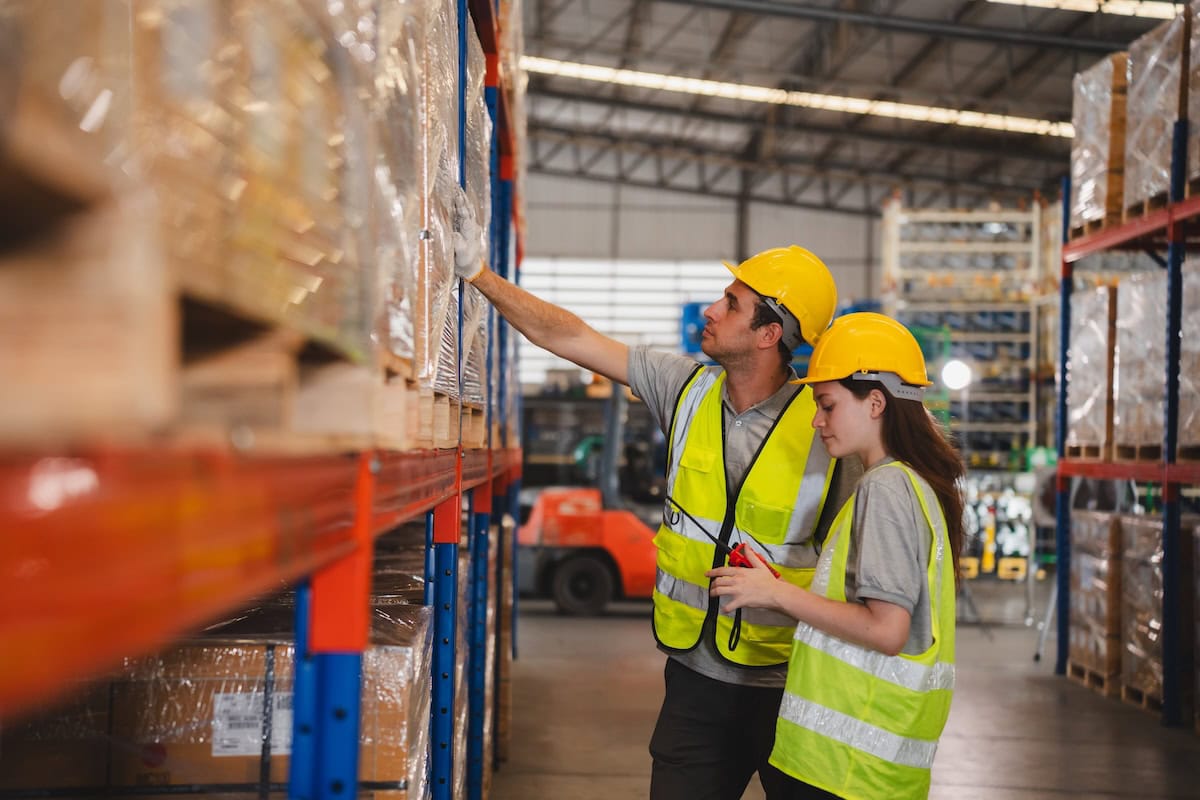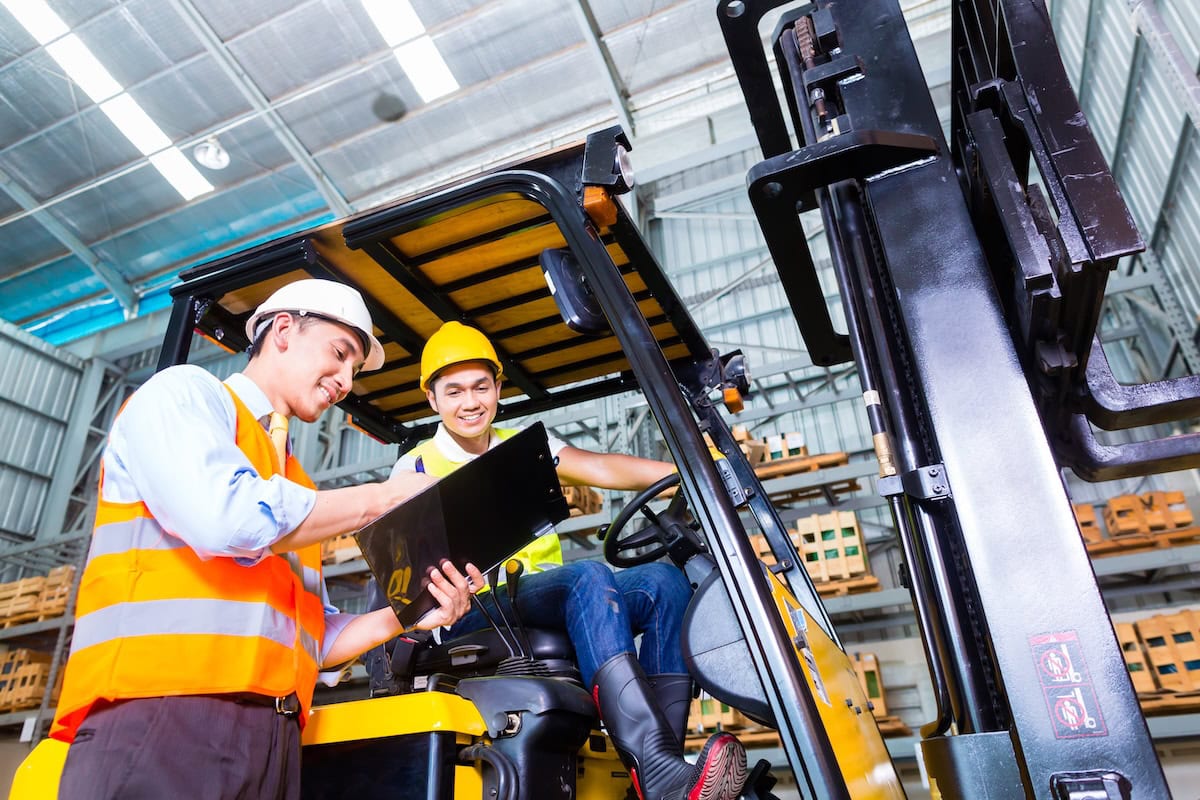
Warehouse hazards are one of the key factors that can impact both employee safety and operational efficiency. The risks in a warehouse, whether stemming from the environment, item storage, or work processes, have the potential to cause accidents that can harm both people and property. This article will explore 9 common warehouse hazards and professional prevention methods that operators and warehouse staff can implement to create a safer and more efficient workspace.
9 Common Warehouse Hazards
In a warehouse, goods are constantly being stored and moved, and various equipment, such as forklifts and lifting tools, are used regularly. Working with these can lead to warehouse accidents if there is inadequate prevention in place. Let’s take a look at the 9 hazards commonly found in warehouses:
Slip and Fall Accidents in the Warehouse
Slip and fall accidents are the most common warehouse accidents. These often occur due to slippery surfaces, which may be caused by cleaning floors or even improper item storage. Slips and falls often result in injuries to the ankles, legs, or spine, which may cause employees to take prolonged sick leave.
Risks from Disorganised Storage
Improper storage of goods or materials can cause workers to trip or stumble, leading to accidents in the warehouse, and could also damage the stored goods.
Improper Handling of Goods
Hazards from improper handling of goods are another frequent risk in the warehouse. For example, employees lifting heavy items without assistance or using the wrong tools can easily cause accidents.
Improper Storage of Hazardous Materials
Hazardous materials, such as chemicals or toxic substances, if not properly stored in the warehouse, can pose serious risks to both employees and the stored goods. Poor storage could lead to leakage, explosions, or unintentional exposure to harmful chemicals.
Falling Materials from Heights
When materials such as pallets, boxes, or goods are stored improperly, they become unstable in a warehouse, and they may fall from heights, potentially injuring workers below or damaging the materials. Such accidents can disrupt warehouse operations, causing delays or even halting work entirely.
Forklift Accidents
Forklift accidents are a major hazard in warehouses. Forklifts are frequently used to move large or heavy items, and without proper care, accidents can occur, such as collisions with workers or obstacles, resulting in injury or damage to property.
Injuries from Machinery or Equipment
Machinery in warehouses, such as conveyor belts, lifts, or hoists, can also be a source of accidents if operators are not careful or fail to maintain the equipment properly. Accidents can occur from misuse or malfunctions during operation, leading to injuries.
Electrical Short Circuits and Fires
Electrical short circuits in the warehouse’s electrical system or equipment can cause significant damage and require constant preventive measures. This is especially critical in areas with a high usage of electrical equipment, as short circuits can destroy property and pose a risk to life.
Employee Fatigue
Employee fatigue is another major factor contributing to warehouse accidents. This is especially true for workers who operate for long hours without sufficient breaks. Fatigued workers are more likely to lose focus, which increases the likelihood of mistakes and accidents.

Professional Methods to Prevent and Reduce Warehouse Risks
Training and Creating a Safety Culture
One of the best ways to reduce warehouse risks is by prioritising employee training at all levels. Training should cover correct working methods, safe tool usage, and emergency procedures. Creating a safety culture in the organisation will raise awareness among employees about potential hazards and encourage them to work more cautiously.
Proper Organisation of Space and Goods Storage
Organizing the warehouse space efficiently can help reduce risks from falling materials and improper storage. Using stable shelving and correctly arranging goods can prevent items from falling. Additionally, good space management helps employees work more efficiently and reduces improper handling of items.
Using Standardized Tools and Equipment
Using tools and equipment that meet safety standards is another way to prevent warehouse accidents. This includes using machinery that is in good condition and complies with safety regulations. Choosing high-quality, certified equipment will reduce the risks associated with unsafe tools.
Regular Inspection and Maintenance of Machinery
Regular maintenance and inspection of machinery is essential to prevent accidents from worn-out equipment. Checking and servicing machinery at scheduled intervals ensures that it operates efficiently and safely, preventing unexpected breakdowns during operations.
Planning and Managing Emergencies in Case of Accidents
It is crucial to be prepared for emergencies that may arise, such as electrical fires or injuries from improper handling of goods. Having a clear emergency plan and conducting drills so all employees know how to respond in the event of an incident will help minimize damage and ensure a faster response to hazards.
To reduce risks from potential hazards such as sharp edges or walkways, it is essential to use high-quality protective equipment. “Corner bumpers guard” from Tellus is one such solution designed to reduce damage and improve warehouse safety. With expert consultation services, contact us to elevate your safety standards today at Tel: 02-643-8044
Reference
- อันตรายที่ควรระวังในคลังสินค้า และการป้องกันมันไม่ให้เกิดขึ้น. Retrieved on June 16, 2025 from https://supakornsafety.com/อันตรายที่ควรระวังในคลังสินค้า-และการป้องกันมันไม่ให้เกิดขึ้น/




